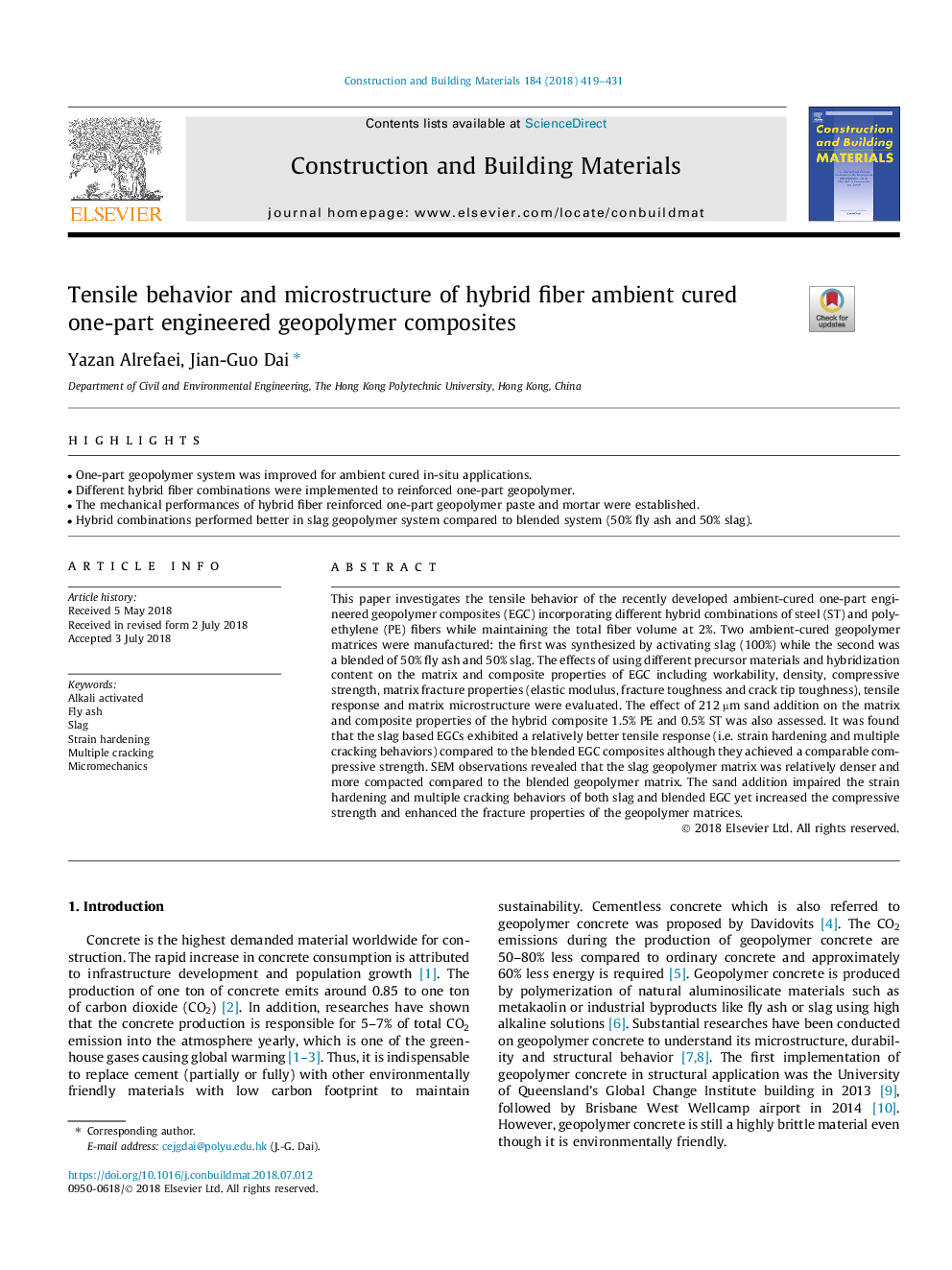| Article ID | Journal | Published Year | Pages | File Type |
|---|---|---|---|---|
| 6712078 | Construction and Building Materials | 2018 | 13 Pages |
Abstract
This paper investigates the tensile behavior of the recently developed ambient-cured one-part engineered geopolymer composites (EGC) incorporating different hybrid combinations of steel (ST) and polyethylene (PE) fibers while maintaining the total fiber volume at 2%. Two ambient-cured geopolymer matrices were manufactured: the first was synthesized by activating slag (100%) while the second was a blended of 50% fly ash and 50% slag. The effects of using different precursor materials and hybridization content on the matrix and composite properties of EGC including workability, density, compressive strength, matrix fracture properties (elastic modulus, fracture toughness and crack tip toughness), tensile response and matrix microstructure were evaluated. The effect of 212â¯Âµm sand addition on the matrix and composite properties of the hybrid composite 1.5% PE and 0.5% ST was also assessed. It was found that the slag based EGCs exhibited a relatively better tensile response (i.e. strain hardening and multiple cracking behaviors) compared to the blended EGC composites although they achieved a comparable compressive strength. SEM observations revealed that the slag geopolymer matrix was relatively denser and more compacted compared to the blended geopolymer matrix. The sand addition impaired the strain hardening and multiple cracking behaviors of both slag and blended EGC yet increased the compressive strength and enhanced the fracture properties of the geopolymer matrices.
Related Topics
Physical Sciences and Engineering
Engineering
Civil and Structural Engineering
Authors
Yazan Alrefaei, Jian-Guo Dai,
